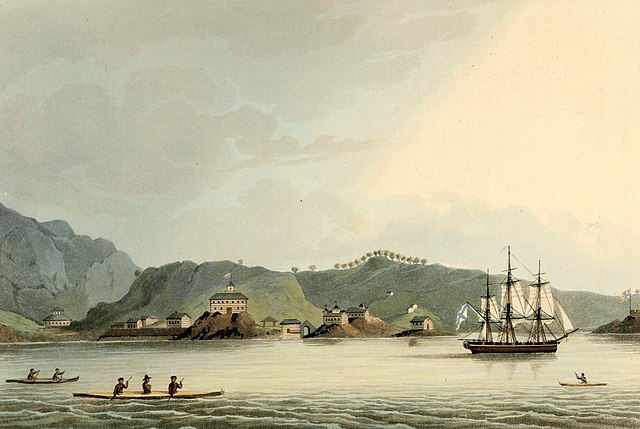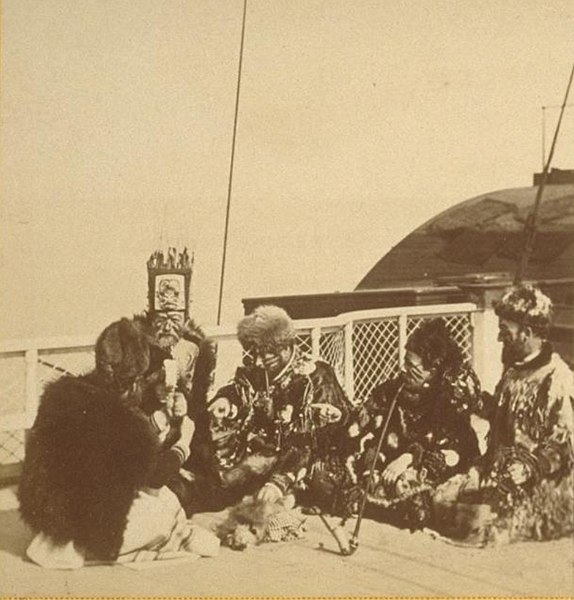The Battle of Sitka was the last major armed conflict between Russians and Alaska Natives, and was initiated in response to the destruction of a Russian trading post two years before. The primary combatant groups were the Kiks.ádi Clan of Sheetʼká Xʼáatʼi of the Tlingit nation and agents of the Russian-American Company assisted by the Imperial Russian Navy.
Battle of Sitka by Louis S. Glanzman, 1988
The Tlingit Ḵʼalyaan Pole, erected at the site of Fort Shís'gi Noow in Sitka National Historical Park to commemorate the lives of those lost in the Battle of Sitka.
The Russian merchant sloop Neva visits Kodiak, Alaska in 1802.
Chief Katlian
Sitka is a unified city-borough in the southeast portion of the U.S. state of Alaska. It was under Russian rule from 1799 to 1867. The city is situated on the west side of Baranof Island and the south half of Chichagof Island in the Alexander Archipelago of the Pacific Ocean. As of the 2020 census, Sitka had a population of 8,458, making it the fifth-most populated city in the state.
Downtown Sitka in 1984
New Archangel, 1805
Gajaa Héen (Old Sitka), c. 1827. The new Russian palisade atop "Castle Hill" (Noow Tlein) that surrounded the Governor's Residence had three watchtowers, armed with 32 cannons, for defense against Tlingit attacks.
Group of Distinguished Chiefs in Sitka (1868)








